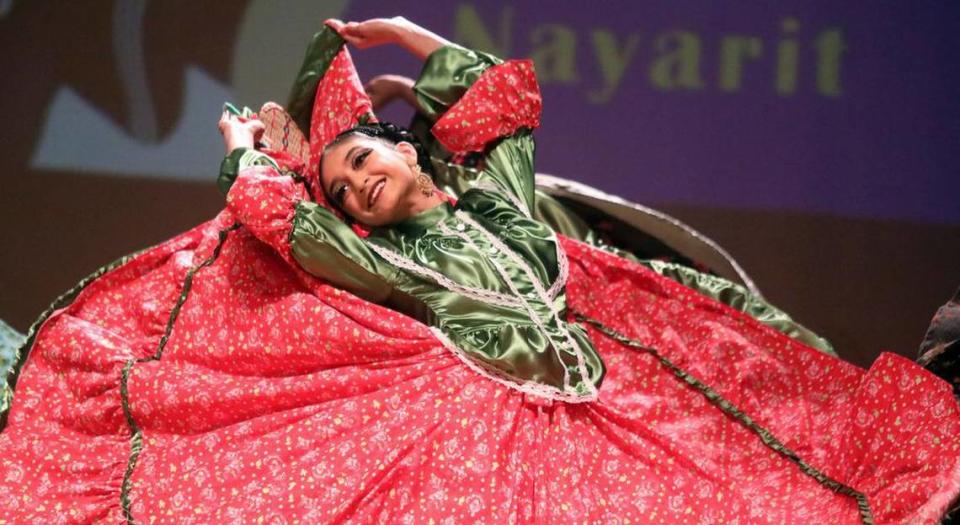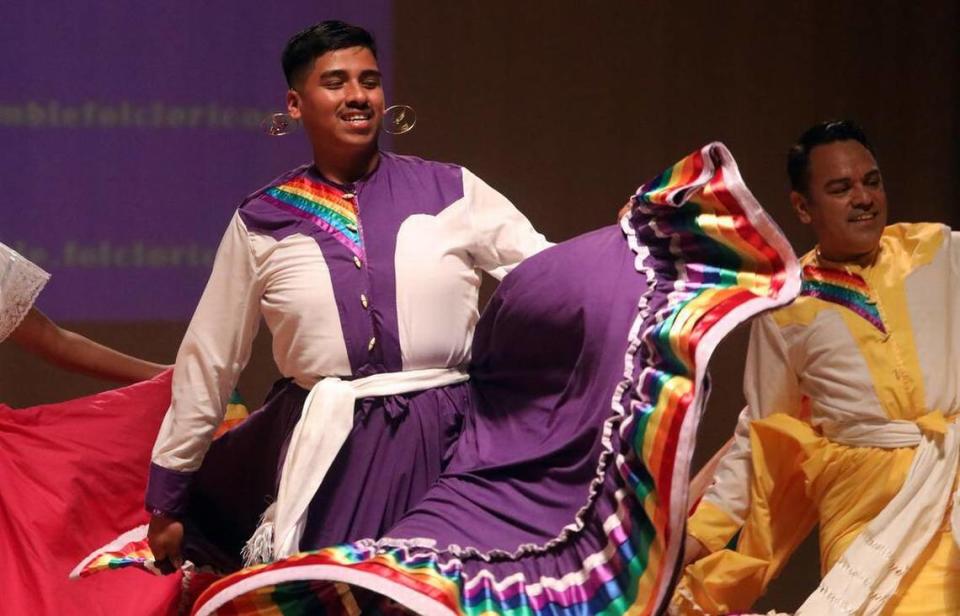Danzantes Unidos Festival performers salute Oaxaca, LGBTQ+ community
They came.
They saw.
They danced.
They remembered.
That pretty much summed up the 44rd edition of the Danzantes Unidos Festival last weekend as more than 1,100 Mexican folkloric dancers took workshops at Sunnyside High School and 25 troupes – one from as far as Washington – presented their best choreography at showcase concerts.
“Definitely seeing how much culture and passion these new kids have that are coming in, especially these high school kids that are here,” said Raúl González Ibañez, president of the Danzantes Unidos board of directors.
“I have never seen so many kids with so much passion and drive for dance and their love for Danzantes Unidos,” said the 29-year-old who danced at Roosevelt High School and grew up with the organization, starting as a volunteer.
The festival, which has called Fresno home since 2011 and 18 times overall, is the largest folklórico dance gathering in the country.
Among the highlights:
-Centro de Folklor embraced Selma’s Oaxacan community with a presentation that fused four of that Mexican state’s dances to end Friday’s performances at the Wilson Theatre.
-At the Warnors Center for the Performing Arts the following evening, Ensemble Folklórico Colibrí from San José embraced the LGBTQ+ community with its gender-bending Jalisco set.
-José Tena, a popular instructor for polks and other dances from Chihuahua and his native New México, announced he will retire after 40 years to support dance groups in his hometown of Las Cruces.
The three-day festival, whose theme was ‘Bailar es Vivir’ (Dancing Is Living), also remembered longtime supporter Juana Saludado, a folklórico dancer/teacher/supporter from Earlimart who also provided muscle for the United Farm Workers.
Saludado died in January at the age of 70.
“The theme for this year, ‘Bailar es Vivir,’ was coined by Juana Saludado,” said Danzantes Unidos chair María Luisa Colmenárez. “She was from the Central Valley and had a history with the farmworkers’ movement. She and her dad played music and recorded music for the farmworker movement.”
Her music was played during a tribute to her at Saturday’s showcase concert. Photos of Saludado flickered in the background while festival organizers stood on stage and later sang ‘De Colores.’
There was also a tribute to a former board member from the Bay area who died the week of the festival.
Colmenárez proclaimed the festival another success on Sunday afternoon after the final class completed its recital in the Sunnyside quad over which the sun played hide-and-seek among clouds.
“Coming back from the pandemic, we didn’t know how quickly we could resuscitate this on the verge of two years of nothing,” she said. “It’s growing very nicely.”
Although Fresno has hosted the festival more times (18) than any other city (San José, with 8, and Los Ángeles with 6 are second and third), it has no lock on a festival that has also gone to six other cities.
Colmenárez acknowledged that board members and dancers “would like to explore other options to take it back to what it always was. That was a gypsy of a festival that really catered to the entire community and not just one.”






